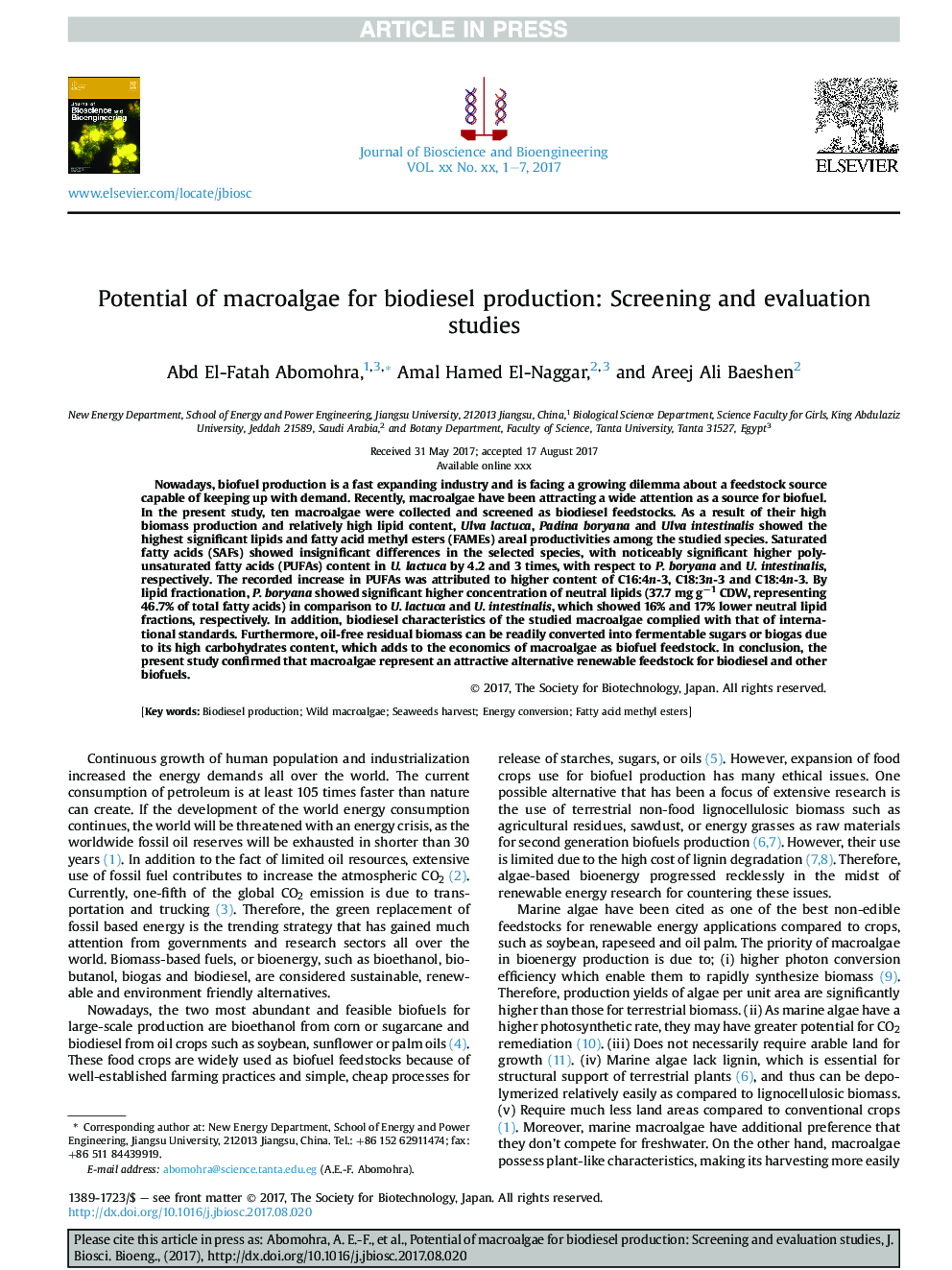| Article ID | Journal | Published Year | Pages | File Type |
|---|---|---|---|---|
| 6490010 | Journal of Bioscience and Bioengineering | 2018 | 7 Pages |
Abstract
Nowadays, biofuel production is a fast expanding industry and is facing a growing dilemma about a feedstock source capable of keeping up with demand. Recently, macroalgae have been attracting a wide attention as a source for biofuel. In the present study, ten macroalgae were collected and screened as biodiesel feedstocks. As a result of their high biomass production and relatively high lipid content, Ulva lactuca, Padina boryana and Ulva intestinalis showed the highest significant lipids and fatty acid methyl esters (FAMEs) areal productivities among the studied species. Saturated fatty acids (SAFs) showed insignificant differences in the selected species, with noticeably significant higher polyunsaturated fatty acids (PUFAs) content in U. lactuca by 4.2 and 3 times, with respect to P. boryana and U. intestinalis, respectively. The recorded increase in PUFAs was attributed to higher content of C16:4n-3, C18:3n-3 and C18:4n-3. By lipid fractionation, P. boryana showed significant higher concentration of neutral lipids (37.7 mg gâ1 CDW, representing 46.7% of total fatty acids) in comparison to U. lactuca and U. intestinalis, which showed 16% and 17% lower neutral lipid fractions, respectively. In addition, biodiesel characteristics of the studied macroalgae complied with that of international standards. Furthermore, oil-free residual biomass can be readily converted into fermentable sugars or biogas due to its high carbohydrates content, which adds to the economics of macroalgae as biofuel feedstock. In conclusion, the present study confirmed that macroalgae represent an attractive alternative renewable feedstock for biodiesel and other biofuels.
Related Topics
Physical Sciences and Engineering
Chemical Engineering
Bioengineering
Authors
Abd El-Fatah Abomohra, Amal Hamed El-Naggar, Areej Ali Baeshen,
